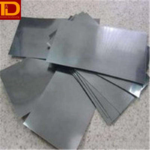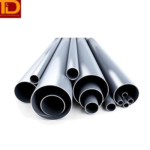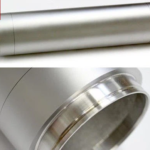Tantalum

Physical Properties
- Atomic Number: 73
- Atomic Weight: 180.94788 u
- Density: 16.69 g/cm³
- Melting Point: 3017°C (5463°F)
- Boiling Point: 5458°C (9856°F)
- Crystal Structure: Body-Centered Cubic (BCC)
- Color: Gray-blue metallic
Chemical Properties
- Oxidation States: +5 (most common), +3
- Electronegativity: 1.5 (Pauling scale)
- Reactivity: Tantalum is highly resistant to corrosion due to the formation of a stable oxide layer.
- Corrosion Resistance: Exceptional resistance, particularly to acids.
Overview
Tantalum (Ta) is a chemical element with the atomic number 73, situated in group 5 of the periodic table. It is a transition metal known for its exceptional resistance to corrosion, high melting point, and biocompatibility. Discovered in 1802 by Anders Gustaf Ekeberg, tantalum is often found in minerals such as tantalite and columbite, frequently occurring alongside niobium.
Uses of Tantalum
Tantalum’s unique properties make it indispensable in various high-tech and industrial applications, particularly in electronics, aerospace, and medical devices.
Electronics
- Capacitors: Tantalum capacitors are crucial for miniaturized electronic devices, offering high capacitance in a small volume.
- Semiconductor Industry: Used in thin-film resistors and as a diffusion barrier in integrated circuits.
Aerospace & Turbines
- Superalloys: Tantalum is used in superalloys for aircraft engines and gas turbines due to its ability to withstand high temperatures and improve alloy strength.
Medical Applications
- Implants and Surgical Instruments: Tantalum’s biocompatibility and resistance to corrosion make it ideal for medical implants and surgical instruments.
- Dental Applications: Used in dental prosthetics due to its inertness and durability.
Chemical Processing Equipment
- Corrosion-Resistant Equipment: Tantalum is used in equipment that handles corrosive chemicals, such as heat exchangers and reaction vessels.
Advantages & Disadvantages of Tantalum
Advantages
- Corrosion Resistance: Provides exceptional resistance to chemical attack, especially from acids.
- High Melting Point: Suitable for high-temperature applications.
- Biocompatibility: Safe for use in medical implants and devices.
- Electrical Properties: High capacitance and reliability in electronic components.
Disadvantages
- Cost: Tantalum is relatively expensive.
- Rarity: Tantalum is not abundantly available and is often sourced from politically unstable regions, leading to supply chain concerns.
Physical & Chemical Properties of Tantalum
| Property | Value |
|---|---|
| Atomic Number | 73 |
| Atomic Weight | 180.94788 u |
| Density | 16.69 g/cm³ |
| Melting Point | 3017°C (5463°F) |
| Boiling Point | 5458°C (9856°F) |
| Crystal Structure | Body-Centered Cubic (BCC) |
| Common Oxidation States | +5, +3 |
| Electronegativity | 1.5 (Pauling scale) |
Major Applications of Tantalum
| Application Area | Examples |
|---|---|
| Electronics | Capacitors, thin-film resistors |
| Aerospace and Turbines | Superalloys |
| Medical | Implants, surgical instruments, dental applications |
| Chemical Processing Equipment | Corrosion-resistant equipment |
Tantalum is a vital metal with a wide range of high-tech and industrial applications, thanks to its excellent corrosion resistance, high melting point, and biocompatibility. Its use in electronics, particularly in capacitors and semiconductor devices, underscores its importance in modern technology. In the aerospace industry, tantalum’s role in superalloys ensures the reliability and performance of high-temperature components. Its biocompatibility makes it an essential material for medical implants and devices. Despite its higher cost and supply chain issues, tantalum’s unique properties ensure its continued demand in various advanced and critical applications.




